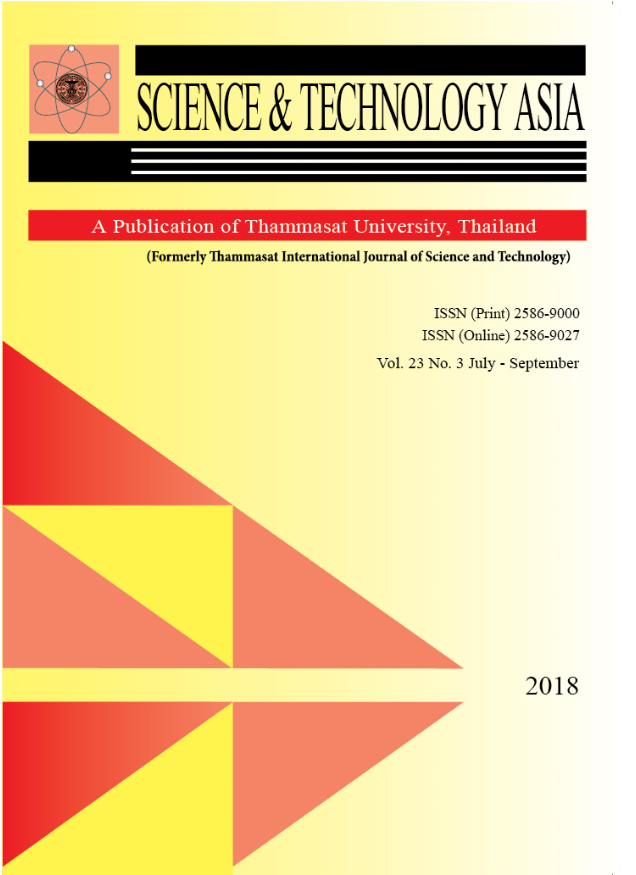Cytotoxic and Antimigration Effects of Different Parts of Oroxylum Indicum Extract on Human Breast Cancer MCF-7 Cells
Main Article Content
บทคัดย่อ
The objective of this research was to investigate the effects of Oroxylum indicum extracts on breast cancer MCF-7 cell proliferation and migration. Four parts of O. indicum, including leaf, bark, pod, and seed, were used. The total phenolic and flavonoid contents were determined to be at high concentrations in the four parts of O. indicum with the seed extract showing the highest levels. For MCF-7 cell death and proliferation, all O. indicum extracts caused stimulating cancer cell death and inhibiting cancer cell proliferation in dose- and time-dependent manners, surprisingly; the seed extract had the highest effects to inhibit cell proliferation. The IC50 values of cell viability of O. indicum extracts were demonstrated as 161.2±8.63, 286.73±33.01, 149.03±8.81, and 107.06±5.66 g/mL for leaf, pod, bark, and seed, respectively. Cell counts by crystal violet staining showed that the seed extract stimulated cell death at the lowest concentration. Moreover, all of the O. indicum extracts decreased MCF-7 cell colony formation. Finally, we found that O. indicum extracts could inhibit cancer cell migration in a dose-dependent manner. In conclusion, our results showed that the seed extract of O. indicum showed the highest cytotoxic and anti-migratory activity, which was more than in the leaf, pod, and bark, on breast MCF-7 cell cancer and O. indicum can be an anticancer agent for breast cancer patients.


